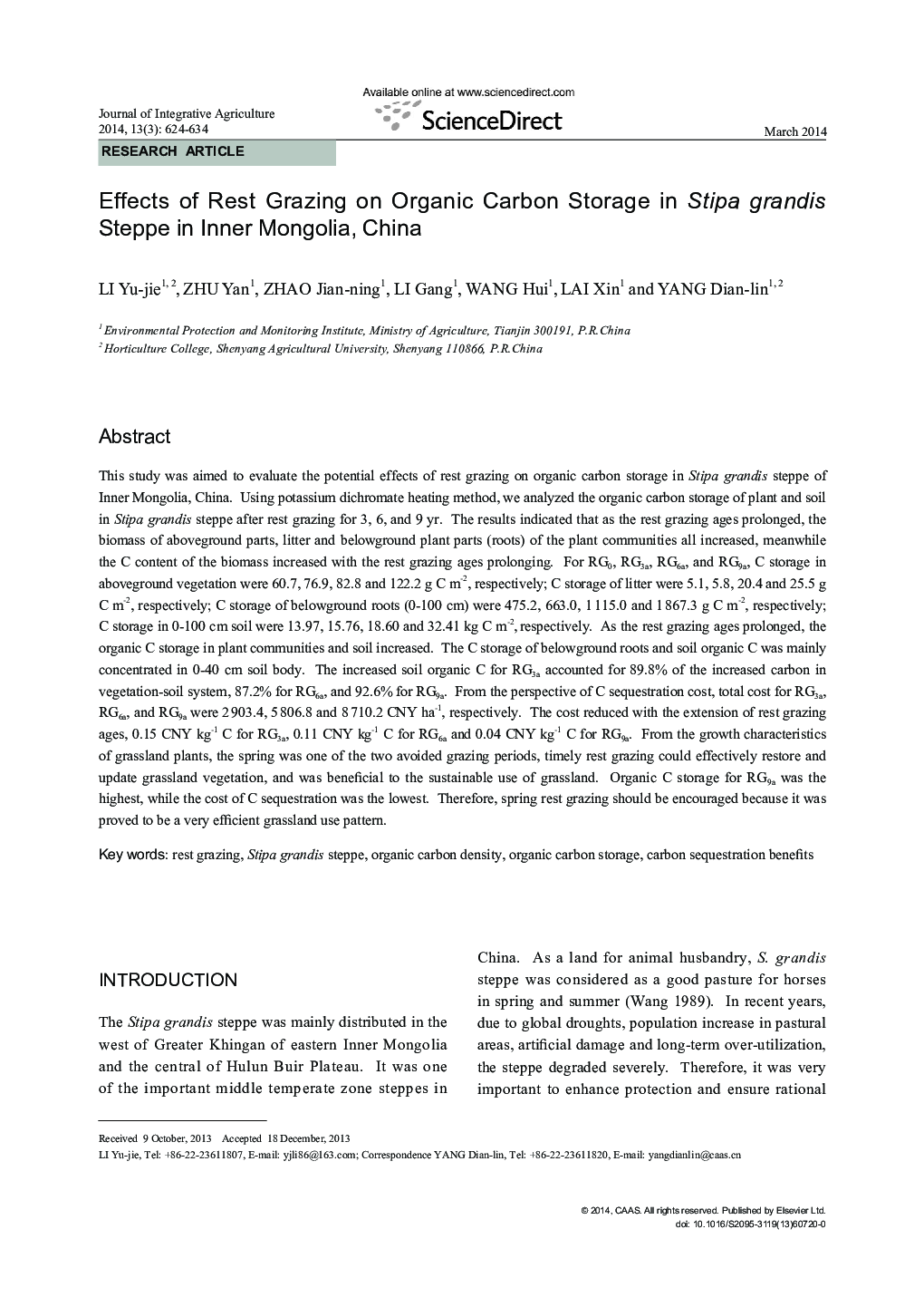| کد مقاله | کد نشریه | سال انتشار | مقاله انگلیسی | نسخه تمام متن |
|---|---|---|---|---|
| 4494669 | 1318723 | 2014 | 11 صفحه PDF | دانلود رایگان |
This study was aimed to evaluate the potential effects of rest grazing on organic carbon storage in Stipa grandis steppe of Inner Mongolia, China. Using potassium dichromate heating method, we analyzed the organic carbon storage of plant and soil in Stipa grandis steppe after rest grazing for 3, 6, and 9 yr. The results indicated that as the rest grazing ages prolonged, the biomass of aboveground parts, litter and belowground plant parts (roots) of the plant communities all increased, meanwhile the C content of the biomass increased with the rest grazing ages prolonging. For RG0, RG3a, RG6a, and RG9a, C storage in aboveground vegetation were 60.7, 76.9, 82.8 and 122.2 g C m−2, respectively; C storage of litter were 5.1, 5.8, 20.4 and 25.5 g C m−2, respectively; C storage of belowground roots (0–100 cm) were 475.2, 663.0, 1 115.0 and 1 867.3 g C m−2, respectively; C storage in 0–100 cm soil were 13.97, 15.76, 18.60 and 32.41 kg C m−2, respectively. As the rest grazing ages prolonged, the organic C storage in plant communities and soil increased. The C storage of belowground roots and soil organic C was mainly concentrated in 0–40 cm soil body. The increased soil organic C for RG3a accounted for 89.8% of the increased carbon in vegetation-soil system, 87.2% for RG6a, and 92.6% for RG9a. From the perspective of C sequestration cost, total cost for RG3a, RG6a, and RG9a were 2 903.4, 5 806.8 and 8 710.2 CNY ha−1, respectively. The cost reduced with the extension of rest grazing ages, 0.15 CNY kg−1 C for RG3a, 0.11 CNY kg−1 C for RG6a and 0.04 CNY kg−1 C for RG9a. From the growth characteristics of grassland plants, the spring was one of the two avoided grazing periods, timely rest grazing could effectively restore and update grassland vegetation, and was beneficial to the sustainable use of grassland. Organic C storage for RG9a was the highest, while the cost of C sequestration was the lowest. Therefore, spring rest grazing should be encouraged because it was proved to be a very efficient grassland use pattern.
Journal: Journal of Integrative Agriculture - Volume 13, Issue 3, March 2014, Pages 624-634
